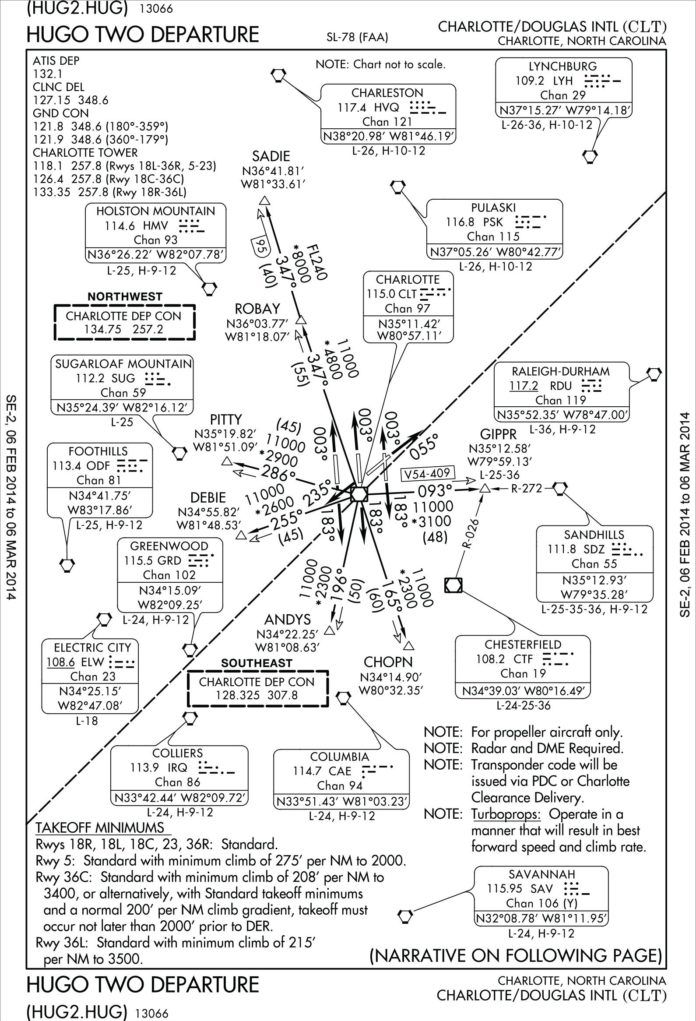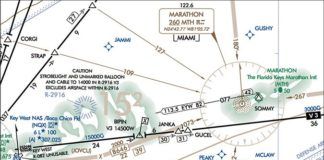Confusing Chart Notes
Many of us at Faribault, Minn (FBL) are confused by the chart notes on the RNAV (GPS) RWY 30 and RWY 12 approaches. What’s up with the restriction about baro-VNAV? And why can’t we fly these approaches at night? The VOR-A has no such restrictions. Surely that circling approach isn’t the only
approach at night?
Jim Hanson
Albert Lea, Minn.
There are two ways to derive glidepath information displayed on your indicator when flying an LNAV/VNAV approach. In both cases, the actual profile of the descent is plotted and surveyed, and that’s what your indicator follows. Baro-aiding uses the GPS position in two dimensions and your altitude derived from barometric pressure and the current altimeter setting to determine where you are relative to that plotted glidepath. The other uses altitude from the WAAS GPS and doesn’t need the baro info.
If you’re using baro-VNAV, at some point extreme temperatures, if not compensated, can cause altimetry errors that exceed the tolerance for the approach. In these cases, you see the note about uncompensated baro-VNAV not being authorized. (Note that you can still use the LNAV minimums, but the same errors exist so caution is in order.)
If you have a WAAS GPS that flies the approach using GPS vertical guidance (not baro-VNAV), then the baro-VNAV restrictions do not apply to you.
From the notes, the procedure is not authorized at night. Period. As Lee Smith explains in “Visual Area Protection” in this issue, the reason is unlighted obstacles that do not meet the clearance requirements. The VOR approach with its higher minimums is not subject to this restriction and, yes, it’s the only available approach at night.
Acronym Jungle
I enjoyed “The Acronym Jungle” in the February issue.
You might add PAR and ASR to your list. It’s important to know if a pilot has to execute a radar approach.
Plus, I’d recommend you amend the definition of VDP: “Where a normal descent angle to the runway intersects the MDA; pilot should not descend below the MDA prior to that point on non-precision approaches that have VDPs.”
Kevin Gromley
Farmington, Mich.
There were possibly hundreds of additional acronyms we might have listed, but we couldn’t devote more than two pages to the article. Similarly, most definitions were deliberately kept short, omitting some restrictions and regulatory guidance such as you suggest for the VDP.
There ain’t nuthin’ simple about a Standard Instrument Departure, but you called it “Simplified.”
Luca Bencini-Tibo
Westin, Fla.
Oops. “Simplified” musta been on the brain with SDF right above it. Thanks.
Wrong Airport
Experienced airline pilots in advanced jets still land at the wrong airport.
Here are two ideas designed to keep a video of your aircraft off CNN. First, if you are not totally familiar with the destination airport, always fly a published approach. Second, if flying at night and the tower is open, ask the controllers to turn the active runway lights up full bright until you’re on final to the correct runway at the correct airport.
John Baum
Pleasanton, Calif.
An Apple for the Pilot
Loved your remarks in January about the FAA’s attempt to regulate pilot weight. It’s just another demonstration of the government getting into our business, trying to force us to do what they think is good for us.
Professional pilots are subject to greater scrutiny via the first class medical.
This more than thorough physical is warranted and rightly so, as they do hold thousands of lives in their capable hands every day. The need for that extensive physical being compared to the less than benign 3rd class Medical required of GA pilots is definitely apples to oranges.
To apply this pseudo-diagnosis of sleep apnea as a precursor to obtaining a third class medical for GA pilots is beyond absurd. If any GA pilot who is currently being treated for sleep apnea or could have a potential to be diagnosed with it, should lose their ability to fly, then shouldn’t any driver with SA be prevented from driving? The potential of falling asleep and having a catastrophic accident in a car vs. an airplane is many times greater.
Mike West
Colusa, Calif.
I have been a pilot since 1989, a doctor since 1977 and a sleep specialist since they started giving boards. I strongly disagree with your stance concerning obstructive sleep apnea (OSA).
The message to pilots should be that because of long duty hours, irregular sleep schedules and poor sleeping environments these individuals are at high risk of fatigue. Medical conditions that are additive to the inherent risk to pilots should be identified and treated.
The key to understanding the problem that our pilots face is how to best identify a high risk population in a simple cost effective way. The best way to find out if a patient has OSA is to get a reliable history from them.
Unfortunately, this is not a realistic approach. Many commercial drivers, misinformed about the risk of their license being revoked, deny sleepiness despite their long duty hours, irregular schedules and difficult sleeping conditions.
The NTSB has already established guidelines for commercial driver physicals that are more stringent than those proposed by the FAA.
Do we really want to wait for the first accident report where OSA is identified as one of the causes of the mishap before acting?
Michael J. Zachek, MD
Bowling Green, Ky.
Why So High?
The CLT HUGO TWO Departure has a segment off the CLT 093 radial eastbound (V54-409) with a MOCA at 3100 and MEA at 11,000 to the SDZ VOR. Yet, the low enroute chart shows an MEA 3100 to 2500 along that route (V54).
Why such a high altitude on the SID?
Dan Chitty
Winston- Salem, N.C.
Remember that SIDs and STARs exist for the primary purpose of meeting ATC requirements for arriving and departing traffic, while also providing terrain separation and noise abatement. Thus, potentially conflicting altitudes must be resolved. It wouldn’t do for a departure and an arrival to have traffic at the same altitude.
Without digging into procedure design notes with the FAA, our educated guess is that the IVANE TWO arrival has a segment just east of CLT with a required altitude of 9000. Setting the altitude on the HUGO departure at 11,000 provides vertical clearance.
We read ‘em all and try to answer most e-mail, but it can take a month or more. Please be sure to include your full name and location. Contact us at [email protected].





